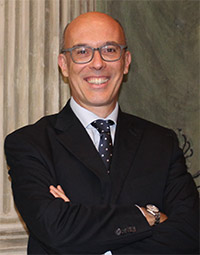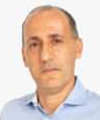Studying at the University of Verona
Here you can find information on the organisational aspects of the Programme, lecture timetables, learning activities and useful contact details for your time at the University, from enrolment to graduation.
Academic calendar
The academic calendar shows the deadlines and scheduled events that are relevant to students, teaching and technical-administrative staff of the University. Public holidays and University closures are also indicated. The academic year normally begins on 1 October each year and ends on 30 September of the following year.
Course calendar
The Academic Calendar sets out the degree programme lecture and exam timetables, as well as the relevant university closure dates..
| Period | From | To |
|---|---|---|
| I sem. | Oct 1, 2014 | Jan 30, 2015 |
| II sem. | Mar 2, 2015 | Jun 12, 2015 |
| Session | From | To |
|---|---|---|
| Sessione straordinaria appelli d'esame | Feb 2, 2015 | Feb 27, 2015 |
| Sessione estiva appelli d'esame | Jun 15, 2015 | Jul 31, 2015 |
| Sessione autunnale appelli d'esame | Sep 1, 2015 | Sep 30, 2015 |
| Session | From | To |
|---|---|---|
| Sessione autunnale appello di laurea 2014 | Nov 26, 2014 | Nov 26, 2014 |
| Sessione invernale appello di laurea 2015 | Mar 18, 2015 | Mar 18, 2015 |
| Sessione estiva appello di laurea 2015 | Jul 14, 2015 | Jul 14, 2015 |
| Sessione autunnale appello di laurea 2015 | Nov 25, 2015 | Nov 25, 2015 |
| Sessione invernale appello di laurea 2016 | Mar 16, 2016 | Mar 16, 2016 |
| Period | From | To |
|---|---|---|
| Vacanze di Natale | Dec 22, 2014 | Jan 6, 2015 |
| Vacanze di Pasqua | Apr 2, 2015 | Apr 7, 2015 |
| Ricorrenza del Santo Patrono | May 21, 2015 | May 21, 2015 |
| Vacanze estive | Aug 10, 2015 | Aug 16, 2015 |
Exam calendar
Exam dates and rounds are managed by the relevant Science and Engineering Teaching and Student Services Unit.
To view all the exam sessions available, please use the Exam dashboard on ESSE3.
If you forgot your login details or have problems logging in, please contact the relevant IT HelpDesk, or check the login details recovery web page.
Should you have any doubts or questions, please check the Enrollment FAQs
Academic staff
Bertelle Roberto
 maurizio.boscaini@univr.it
maurizio.boscaini@univr.it
 bruno.gobbi@univr.it
bruno.gobbi@univr.it
Guarnieri Valerio
 valerio.guarnieri@univr.it
valerio.guarnieri@univr.it
 +39 045 802 7085
+39 045 802 7085

Residori Stefania
 stefania.residori@univr.it
stefania.residori@univr.it
 claudio.tomazzoli@univr.it
claudio.tomazzoli@univr.it
Ugolini Simone
 simone.ugolini@univr.it
simone.ugolini@univr.it
Study Plan
The Study Plan includes all modules, teaching and learning activities that each student will need to undertake during their time at the University.
Please select your Study Plan based on your enrollment year.
1° Year
| Modules | Credits | TAF | SSD |
|---|
2° Year activated in the A.Y. 2015/2016
| Modules | Credits | TAF | SSD |
|---|
Un insegnamento a scelta tra i seguenti3° Year activated in the A.Y. 2016/2017
| Modules | Credits | TAF | SSD |
|---|
Un insegnamento a scelta tra i seguenti| Modules | Credits | TAF | SSD |
|---|
| Modules | Credits | TAF | SSD |
|---|
Un insegnamento a scelta tra i seguenti| Modules | Credits | TAF | SSD |
|---|
Un insegnamento a scelta tra i seguentiLegend | Type of training activity (TTA)
TAF (Type of Educational Activity) All courses and activities are classified into different types of educational activities, indicated by a letter.
Physics 1 (2014/2015)
Teaching code
4S00038
Teacher
Coordinator
Credits
6
Language
Italian
Scientific Disciplinary Sector (SSD)
FIS/01 - EXPERIMENTAL PHYSICS
Period
II sem. dal Mar 2, 2015 al Jun 12, 2015.
Learning outcomes
This course is designed for students of the Master degree in Computer Science. The course will be focussed on the foundations of the experimental method, the classical mechanics of a particle and systems of particles and thermodynamics.
The educational objectives will be reached through lessons and exercises; lessons will be held during the second semester for a total of 6 credits. To facilitate the student in understanding and learning the laws and principles of mechanics and thermodynamics, during the lectures, frequent recall to phenomenology will be performed. The course is completed by exercises in order to prepare students for final exams .
Program
1- Physics and measurement. Standards of lenght, mass and time. Dimensional analysis, Conversion of units. Vector and scalar quantities. Components of a vector and unit vectors. Properties of vectors. The scalar and vector products of two vectors.
2- Motion in one dimension. Position, velocity and speed. Particle under constant velocity. Acceleration. Motion diagrams. Particle under constant acceleration. Freely falling object. Motion in two dimensions. Position velocity and acceleration vectors. Two dimensional motion with constant acceleration. Projectile motion. Particle in uniform circular motion. Tangential and radial acceleration. Relative velocity and relative acceleration.
3- The Laws of Motion: The concept of force. Newton’s first law and inertial frames. Mass. Newton’s second law. The gravitational and electrostatic forces. The gravitational force and weight. Newton’s third law. Forces of friction. Newton’s second law for a particle under uniform circular motion. Non uniform circular motion. Motion in accelerated frames. Motion in the presence of resistive forces.
4- Energy and work. Work done by a constant force. Work done by a varying force. Kinetic energy and the work-kinetic energy theorem. Potential energy. Conservative and non conservative forces. Relationship between conservative forces and potential energy. Energy diagrams and equilibrium of a system. Conservation of energy for a non isolated system and for an isolated system. Situations involving kinetic friction. Changes in mechanical energy for non conservative forces. Power.
5- Linear momentum and collisions. Linear momentum and its conservation. Collisions in one dimension. Collisions in two dimensions. The center of mass. Systems of many particles. Rocket propulsion.
6- Rotation of a rigid object about a fixed axis. Angular position, velocity and acceleration. Rigid object under constant angular acceleration. Angular and translational quantities. Rotational kinetic energy. Moments of Inertia. Torque. Rigid object under a net torque. Energy consideration in rotational motion. Angular momentum. Angular momentum for a rigid object. Angular momentum for an isolated system.
7- Newton’s law of universal gravitation. Free-fall acceleration and the gravitational force. Kepler’s laws and the motion of planets. The gravitational field. Gravitational potential energy.
8- Fluid Mechanics. Pressure. Variation of pressure with depth. Pressure measurements. Archimede’s principle. Fluid dynamics. Bernoulli’s equation.
9- Oscillatory motion. Motion of an object attached to a spring. Particle in simple harmonic motion. Energy of the simple harmonic oscillator. Comparing simple harmonic motion with uniform circular motion. The pendulum. Damped and forced oscillations.
10- Thermodynamics. Temperature and the zeroth law of thermodynamics. Thermometers and the Celsius temperature scale. The constant-volume gas thermometer and the absolute temperature scale. Thermal expansion. Macroscopic description of an ideal gas. Heat and internal energy. Specific heat and calorimetry. Work and heat in thermodynamic processes. The first law of Thermodynamics. Heat engines and the second law of thermodynamics. Reversible and irreversible processes. The Carnot engine. Entropy.
Examination Methods
The final exam will be in written and will be focussed on solving typical problems of general physics (mechanics and thermodynamics) followed by an optional oral test. Necessary condition for passing the exam is to obtain a minimum mark of 18/30 in the written test. The oral test will be performed only for those students that have had in the written test a minimum mark of 26/30.
The dates of the exams are decided in harmony with the academic calendar approved by the Faculty.
Suggested book:
R.A. Serway, J.W. Jewett, Fisica per Scienze e Ingegneria vol I. Edizioni Edises.
Teaching materials e documents
-
 diapo-cap15
(pdf, it, 1656 KB, 27/05/15)
diapo-cap15
(pdf, it, 1656 KB, 27/05/15)
-
 diapo-cap19
(pdf, it, 974 KB, 27/05/15)
diapo-cap19
(pdf, it, 974 KB, 27/05/15)
-
 diapo-cap20
(pdf, it, 1168 KB, 27/05/15)
diapo-cap20
(pdf, it, 1168 KB, 27/05/15)
-
 diapo-cap22
(pdf, it, 1286 KB, 27/05/15)
diapo-cap22
(pdf, it, 1286 KB, 27/05/15)
-
 esame24giugno
(pdf, it, 167 KB, 26/06/15)
esame24giugno
(pdf, it, 167 KB, 26/06/15)
-
 esempi-esami
(pdf, it, 598 KB, 27/05/15)
esempi-esami
(pdf, it, 598 KB, 27/05/15)
-
 parziale Fisica I
(octet-stream, it, 120 KB, 21/04/15)
parziale Fisica I
(octet-stream, it, 120 KB, 21/04/15)
-
 testo e svolgimento prova 8 giugno
(pdf, it, 169 KB, 08/06/15)
testo e svolgimento prova 8 giugno
(pdf, it, 169 KB, 08/06/15)
Type D and Type F activities
Modules not yet included
Career prospects
Module/Programme news
News for students
There you will find information, resources and services useful during your time at the University (Student’s exam record, your study plan on ESSE3, Distance Learning courses, university email account, office forms, administrative procedures, etc.). You can log into MyUnivr with your GIA login details: only in this way will you be able to receive notification of all the notices from your teachers and your secretariat via email and soon also via the Univr app.
Graduation
List of theses and work experience proposals
| theses proposals | Research area |
|---|---|
| Analisi e percezione dei segnali biometrici per l'interazione con robot | AI, Robotics & Automatic Control - AI, Robotics & Automatic Control |
| Integrazione del simulatore del robot Nao con Oculus Rift | AI, Robotics & Automatic Control - AI, Robotics & Automatic Control |
| Domain Adaptation | Computer Science and Informatics: Informatics and information systems, computer science, scientific computing, intelligent systems - Computer graphics, computer vision, multi media, computer games |
| Domain Adaptation | Computer Science and Informatics: Informatics and information systems, computer science, scientific computing, intelligent systems - Machine learning, statistical data processing and applications using signal processing (e.g. speech, image, video) |
| BS or MS theses in automated reasoning | Computing Methodologies - ARTIFICIAL INTELLIGENCE |
| Domain Adaptation | Computing Methodologies - IMAGE PROCESSING AND COMPUTER VISION |
| Domain Adaptation | Computing methodologies - Machine learning |
| Dati geografici | Information Systems - INFORMATION SYSTEMS APPLICATIONS |
| Analisi e percezione dei segnali biometrici per l'interazione con robot | Robotics - Robotics |
| Integrazione del simulatore del robot Nao con Oculus Rift | Robotics - Robotics |
| BS or MS theses in automated reasoning | Theory of computation - Logic |
| BS or MS theses in automated reasoning | Theory of computation - Semantics and reasoning |
| Proposte di tesi/collaborazione/stage in Intelligenza Artificiale Applicata | Various topics |
| Proposte di Tesi/Stage/Progetto nell'ambito dell'analisi dei dati | Various topics |
Attendance
As stated in the Teaching Regulations for the A.Y. 2022/2023, attendance at the course of study is not mandatory.





















